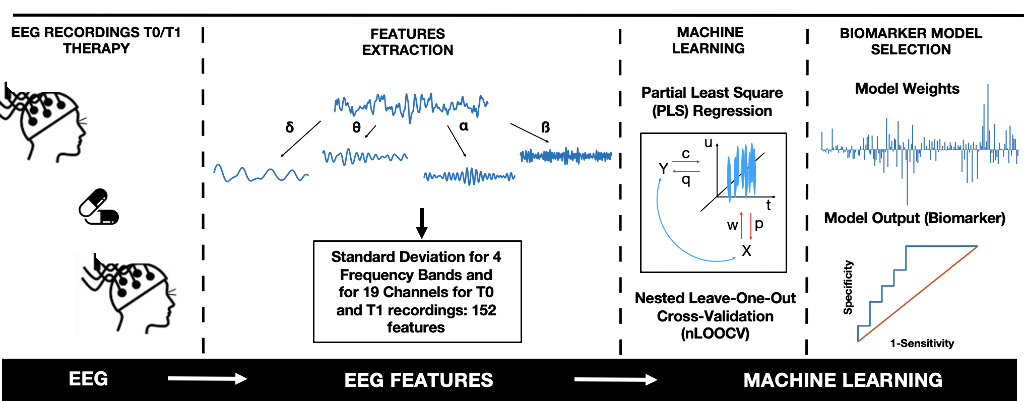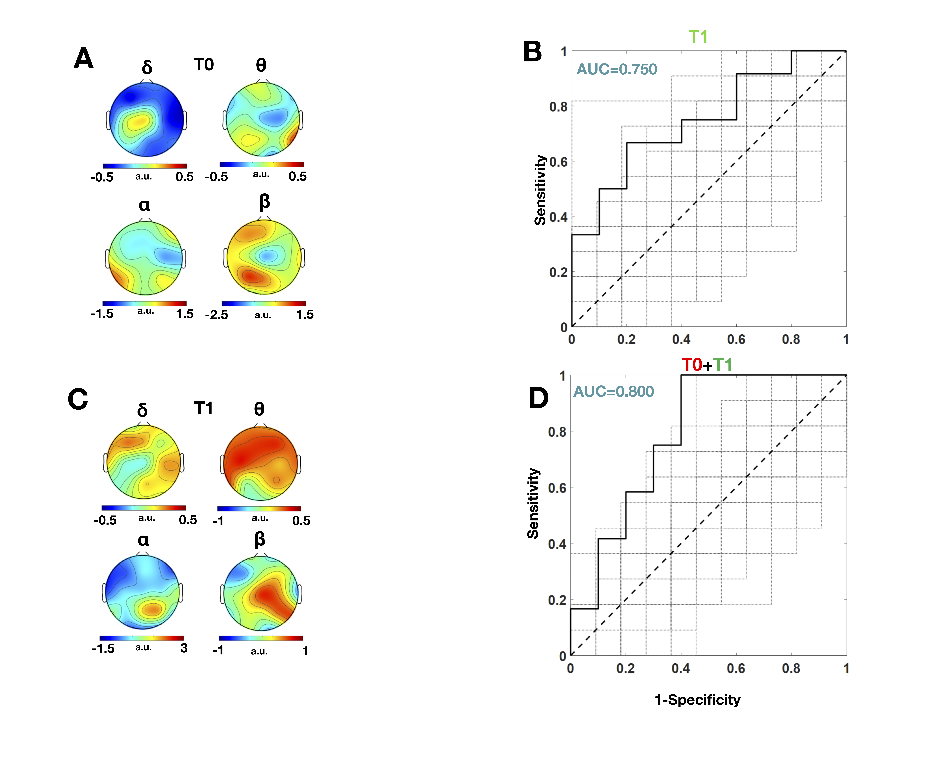Welcome to the WCN 2021 Interactive Program
The congress will officially run on Central European Time (CET) - Rome Time
To convert the congress times to your local time Click Here
Please note that all sessions will run at their scheduled time and be followed by a LIVE Q&A/Discussion at the end
The viewing of sessions, cannot be accessed from this conference calendar. All sessions are accessible via the Virtual Platform
- Sam Berkovic (Australia)
GENETIC TESTING FOR ADULTS WITH EPILEPSY REVEALS A SIGNIFICANT DIAGNOSTIC YIELD AND PRECISION MEDICINE IMPLICATIONS FOR MANY INDIVIDUALS WITH A MOLECULAR DIAGNOSIS
- Dianalee McKnight (United States of America)
Abstract
Background and Aims:
The benefit of genetic testing in children with epilepsy is well-demonstrated, yet little is known about its utility in adults. This study aims to investigate the diagnostic yield and potential precision medicine implications of genetic testing in adults with epilepsy.
Methods:
Genetic testing results from an epilepsy gene panel of up to 186 genes were analyzed for a cohort of 2008 unselected adults (ages 18-78 years, mean 27.8). A definitive, positive molecular diagnosis (PosMD) included either single pathogenic/likely pathogenic (P/LP) variants in autosomal dominant or X-linked genes, or two P/LP (homozygous or compound heterozygous) in recessive genes.
Results:
A PosMD was identified in 221 (11.0%) individuals. Adults with infantile-onset seizures (0-1 years) had the highest PosMD rate (29.6%), followed by early childhood-onset (13.6%, 2-4 years), late childhood-onset (7.0%, 5-10 years), adolescence-onset (2.4%, 11-17 years) and adult-onset (3.7%, ≥18 years). Individuals with epilepsy and intellectual disability and/or developmental delay (ID/DD) had an increased PosMD rate (16.4%). Overall, 54.8% of PosMD individuals had findings in genes with precision medicine implications (PMI-genes, e.g., SCN1A, TSC1, KCNQ2, and SCN2A). Among individuals with pharmacoresistant epilepsy, 13.5% had a PosMD, of which, 57.4% were in PMI-genes.
Conclusions:
Genetic testing has a significant PosMD yield for adults with epilepsy. Nearly half of PosMD are in PMI-genes, suggesting that genetic testing could have a direct impact on clinical management. Genetic testing should be broadly considered in adults, particularly for those with infancy/childhood-onset seizures or with ID/DD.
FOCAL EPILEPSY DUE TO MALFORMATIONS OF CORTICAL DEVELOPMENT: LONG-TERM OUTCOME AND PROGNOSIS PREDICTORS
- Laura Licchetta (Italy)
Abstract
Background and Aims:
to evaluate the long-term outcome of patients with epilepsy and malformations of cortical development (MCD).
Methods:
retrospective cohort study of patients with epilepsy due to impaired neuronal migration and post-migration organization. For each patient, the MCD was classified after accurate neuroimaging review by an expert neuroradiologist. The primary outcome was terminal remission (TR), defined as a period of seizure freedom for at least 1 year at the last follow-up. We used Kaplan-Meier estimates to calculate the cumulative time dependent probability of TR from disease onset and to generate survival curves. Baseline variables were evaluated as possible prognostic factors (Cox model).
Results:
The cohort included 71 patients with a 24-year median F-U: 35 had heterotopia, 5 lissencephaly, 25 polymicrogyria, 6 combined MCD. The mean age at seizure onset was 12±7 years (median:13 years). At last follow-up, 30 patients achieved TR (42%). The cumulative time-dependent probability of conversion to TR was 25% by 20 years from inclusion. At the univariate analysis, the absence of intellectual disability (p=0.041) and the unilateral distribution of MCD (p=0.010) significantly correlated with the outcome. In the Cox model, age at onset ≥13 years (HR 2.4, CI 95%:1.1-5.1), absence of intellectual disability (HR 2.7, CI: 1-7), and unilateral distribution of MCD (HR 3.3, CI:1.5-7.4) were significantly associated with TR.
Conclusions:
Patients with epilepsy and MCD showed a cumulative TR rate of the 25% by 20 years from inclusion. Late seizure onset, absence of intellectual disability and unilateral distribution of the malformation are independent predictors of positive prognosis.
IL-6 ROLE IN MESIAL TEMPORAL LOBE EPILEPSY DEVELOPMENT
- Bárbara Guerra Leal (Portugal)
Abstract
Background and Aims:
Inflammation is an epilepsy hallmark with a prominent role assigned to Interleukin-6 (IL-6). This cytokine is claimed to partake in synaptic modulation and neuronal development. IL-6 overexpression has been documented in Mesial Temporal Lobe Epilepsy (MTLE) patients suggesting the influence of IL6 polymorphisms, namely rs1800795 (-174 G>C) in genetic susceptibility to MTLE. We sought to quantify IL-6 brain expression in MTLE patients and analyse the role of rs1800875 polymorphism in epilepsy susceptibility.
Methods:
A cohort of 212 MTLE patients (116 F; 111 with Febrile Seizure Antecendent; 165 refractory to treatment) and 143 healthy individuals were studied. All patients were diagnosed with Hippocampal Sclerosis (MTLE-HS). Twelve out of these patients have been submitted to resective surgery with hippocampal and adjacent neocortex tissue available for gene expression studies. As tissue control the same brain regions were obtained from 9 normal autopsied controls. Molecular biology techniques were applied in genotyping and gene expression analysis.
Results:
Rs1800795 genotypic and allelic frequencies were similar in MTLE-HS patients and controls (G: 68.4% vs 63.6%; C: 31.6% vs 36.4%. p = n.s). Noteworthy, MTLE-HS patients had a 3-fold higher IL-6 expression in hippocampus and neocortical tissue comparing to controls.
Conclusions:
Our results suggest that IL-6 overexpression is not genetically determined but may be seizure-induced. It is widely accepted that a vicious cycle seizure-damage-inflammation is associated with MTLE-HS progression. This hypothesis is supported by our observations in neocortical tissue, suggesting that IL-6 plays a role in MTLE-HS progression.
GENETIC TESTING GUIDES CLINICAL MANAGEMENT OF EPILEPSY AND IMPROVES PATIENT OUTCOMES
- Dianalee McKnight (United States of America)
Abstract
Background and Aims:
Nearly half of positive genetic testing findings for epilepsy are in clinically actionable genes and can help guide clinical management. However, little information is available on how genetic information is used by clinicians to guide management and what the patient outcomes are. In this study, we addressed this gap by investigating changes in clinical management and patient outcomes after a definitive genetic diagnosis of epilepsy was identified.
Methods:
Between May-November 2020, 170 of 1,567 invited clinicians completed case report forms for 429 patients with epilepsy and a positive genetic diagnosis.
Results:
In 49.9% of cases (n=214), the positive genetic diagnosis led to a change in clinical management. In most cases (81.3%, n=174), providers changed clinical management within 3 months of receiving the genetic result. Over half of the reported clinical management changes pertained to medication adjustments. Of those who were followed up on after treatment change (n = 172), 75% (n = 129) were reported to have improvement in their condition. Specifically, 65% (n=111) of patients had improved seizure control (reduced or stopped seizures).
Conclusions:
Our study demonstrates that genetic testing can enable critical clinical management changes that improve patient outcomes. Previous patient studies demonstrated reduced healthcare costs for individuals with good seizure management compared to individuals with poor seizure control (~$14,000/year vs. ~$23,000/year, respectively), due to decreased hospitalizations and emergency department visits. Collectively these data can inform updates to guidelines to include genetic testing to improve health outcomes, and ultimately reduce healthcare costs.
SUPER-REFRACTORY STATUS EPILEPTICUS AFTER CARDIAC ARREST: AGGRESSIVE TREATMENT GUIDED BY MULTIMODAL PROGNOSTIC INDICATORS (SUPER-CAT)
- Simone Beretta (Italy)
Abstract
Background and Aims:
The aim of the SUPER-CAT study is to investigate the efficacy and safety of a double antiglutamatergic therapy as compared with a non-antiglutamatergic therapy for super refractory status epilepticus in survivors of cardiac arrest with favorable prognostic indicators.
Methods:
In a retrospective cohort study, 48 comatose patients with post-anoxic super refractory status epilepticus and <= 2 out of 5 poor neurologic prognostic indicators were included in the study. Patients treated with a standardized double antiglutamatergic treatment (n = 26; ketamine 1.5-7.5 mg/kg/hour according to EEG target for 3 days + perampanel 12 mg/day for 5 days followed by gradual tapering) were compared to patients treated with non-standardized, non-antiglutamatergic treatments (n = 22). Primary efficacy outcomes were resolution of status epilepticus and cerebral performance category (CPC) at 6 months. The primary safety outcome was in-hospital mortality.
Results:
The proportion of patients with resolution of status epilepticus was 81% in the double antiglutamatergic treatment group versus 45% in the non-antiglutamatergic treatment group (absolute difference 23%; OR 4.3; p=0.007). A good neurological outcome at 6 months (CPC 0 to 2) was achieved by 41% of patients in the antiglutamatergic treatment group versus 18% in the non-antiglutamatergic treatment group (absolute difference 23%; OR 3.1; p=0.07). In-hospital mortality was 15% in the antiglutamatergic treatment group versus 64% in the non-antiglutamatergic treatment group (absolute difference 49%; OR 0.09; p=0.0025).
Conclusions:
Selected patients with post-anoxic super-refractory status epilepticus can benefit a sustained and intensive treatment. A standardized double antiglutamatergic therapy is a promising therapeutic option for these patients.
USE OF MACHINE LEARNING FOR PREDICTING LEVETIRACETAM TREATMENT OUTCOME IN TEMPORAL LOBE EPILEPSY: A PHARMACO-EEG STUDY.
- Lorenzo Ricci (Italy)
Abstract
Background and Aims:
Temporal Lobe Epilepsy (TLE) is a common cause of drug-resistant epilepsy. For these patients, the electroencephalogram (EEG) is a pivotal diagnostic neurophysiological technique. In this study, we aim to determine the predictive power for seizure-freedom of 19-channels EEG, measured both before and after three months the initiation of one of the most used anti-seizure medication (ASM), levetiracetam (LEV), in a population of newly diagnosed TLE people using a machine-learning approach.
Methods:
Twenty-three individuals with TLE were examined. Clinical outcome was dichotomized into seizure-free (SF) and non-seizure-free (NSF) after two years of LEV. EEG effective power in different frequency bands was compared using baseline EEG (T0) and the EEG after three months of LEV therapy (T1) between SF and NSF patients. Partial Least Square (PLS) analysis was used to test and validate the prediction of the model for clinical outcome.

Results:
A total of 152 features were extracted from the EEG recordings calculating the effective power for each channel and for four frequency bands (delta: 1-4 Hz, theta: 5-7 Hz, alpha: 8-12 Hz and beta: 13-29 Hz). When considering only the features calculated at T1, an AUC = 0.750 was obtained. When employing both T0 and T1 features, an AUC = 0.800 was obtained.

Conclusions:
This study provides a proof-of-concept pipeline for predicting the clinical response to ASMs in people with epilepsy. Future studies employing larger data sets may benefit from the pipeline proposed in this study in order to develop a model that can match each patient to the most effective anti-seizure treatment.
INVESTIGATING THE ROLE OF MUSCARINIC ACETYLCHOLINE M2 AND SEROTONIN 5-HT2B RECEPTORS, NOREPINEPHRINE TRANSPORTER AND KIR CHANNELS IN A PENTYLENETETRAZOL-KINDLING MODEL OF EPILEPSY
- Villa Chiara (Italy)
Abstract
Background and Aims:
Epilepsy encompasses a group of neurological disorders characterized by an imbalance of electrical activity in the central nervous system (CNS) and recurrent seizures representing the principal clinical manifestation. Acetylcholine (ACh), serotonin, and norepinephrine (NE) may modulate neural activity via several mechanisms, mainly through its receptors/transporter activity and alterations in the extracellular potassium (K+) concentration via inwardly rectifying K+ (Kir) channels. Therefore, the aim of this study was to investigate the immunoreactivity pattern of these neurotransmitter, receptors/transporters and Kir channels in Pentylenetetrazol (PTZ)-kindling rat model, a well-established tool for studying chronic epilepsy.
Methods:
Kindling was chemically induced by intraperitoneally injections of PTZ for one month. Changes in the immunoreactivity of epileptogenesis-related neurotransmitter receptors/transporters (M2, 5-HT2B, and NE transporter) as well as Kir3.1 and Kir6.2 channels were determined in the cortex, hippocampus and medulla of adult Wistar rats by immunohistochemistry analyses.
Results:
Increased immunoreactivity of the NE transporter, M2, and 5-HT2B receptors was witnessed in the cortex and medulla. While the immunoreactivity of the 5-HT2B receptor was found increased in the cortex and medulla, it was decreased in the hippocampus, with no changes observed in the M2 receptor in this region. Kir3.1 and Kir6.2 staining showed increase immunoreactivity in the cerebral cortex, but contrasting findings were found in the hippocampus and medulla.
Conclusions:
Our data suggested significant changes in the neurotransmitter, receptors/transporters and ion channels, that may regulate neurotransmitter levels such as ACh, serotonin, and NE in the cortex, hippocampus, and medulla, thus contributing to epileptogenesis.
